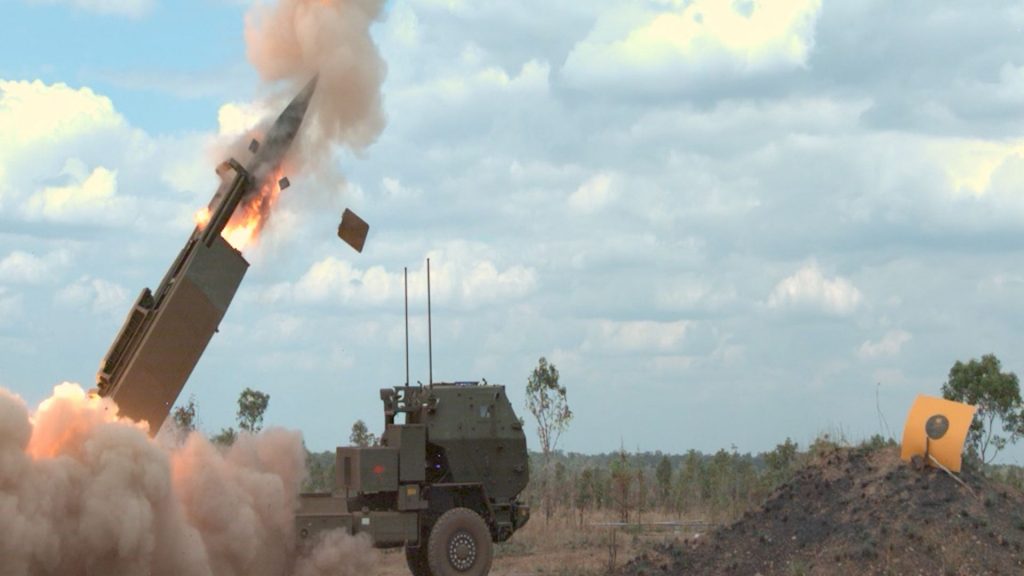Hey, China, Australia just fired a major warning shot

Australia just fired a major warning shot — literally — into the Indo-Pacific defense landscape. In a pair of historic firsts, the Australian army launched a HIMARS-guided rocket and a codeveloped Precision Strike Missile (PrSM) from its own territory. The launches took place during Talisman Sabre 2025, a massive multinational military exercise involving the U.S., Australia and nearly 20 other partners.
The PrSM, which is being codeveloped by the United States and Australia, is designed to replace the aging Army Tactical Missile System (ATACMS). Capable of traveling at over three times the speed of sound with a range already surpassing 250 miles, the missile is set to become a cornerstone of future long-range strike capability.
Footage captured at the Mount Bundey Training Area in Australia’s Northern Territory on Friday, July 25, shows the PrSM hitting its target with devastating precision. The imagery is some of the best we’ve seen of the new munition in action.
Australian strike capability enters new era
For the Australian army, the tests mark a transformational leap. Brig. Nick Wilson, commander of the 10th Brigade, said the PrSM drastically extended the Army’s strike range — from 30 kilometers to over 300 in a single day.
“This capability is very significant,” said Lt. Gen. Simon Stuart, chief of the Australian army. “When deployed forward, these missiles can kill ships. That helps create windows of opportunity and advantage for our brothers and sisters in the navy and the air force.”
These developments follow the delivery of the first batch of Australia’s 42 ordered HIMARS launchers in March. Australia’s Department of Defence said the PrSM firing was conducted two years ahead of schedule and demonstrates the Albanese government’s commitment to rapidly expanding its long-range strike arsenal. The Australian DoD said in a release the launch underscores progress on the 2024 National Defence Strategy, which prioritizes littoral maneuver and deterrence in response to regional instability.
Regional deterrence in a volatile Indo-Pacific
Talisman Sabre 2025, now in its 11th iteration, has grown dramatically from a bilateral U.S.-Australia effort into a global-scale demonstration of coalition strength. This year’s exercise involved more than 35,000 troops from 19 nations, with two more observing. The deputy commanding general of U.S. Army Pacific, Lt. Gen. Joel Vowell, said the increased participation is a signal of shared concern over China’s military posturing and the need for allied interoperability.
A highlight of this year’s exercise was a multinational HIMARS live-fire demonstration involving the U.S., Australia and Singapore. In a coordinated strike, crews from all three nations launched rockets from different locations to hit a single deep target — an unprecedented feat that showcases the growing interoperability and cohesion of allied forces in the region.
Also new to this year’s drills was the U.S. Army’s Typhon missile system, which launched a Standard Missile-6 from land to hit a sea target west of the International Date Line for the first time. According to Vowell, these capabilities represent “an asymmetric advantage” for the U.S. and its partners. It’s one China has yet to fully account for in its missile-based anti-access, area denial strategy, Vowell said.
PrSM’s road ahead in Australia
Australia’s role in the PrSM program is more than operational, it’s also industrial. A memorandum of understanding, signed earlier this year between Canberra and Washington, cements Australia as a full cooperative partner in the missile’s production, sustainment and follow-on development. That agreement opens the door to future domestic manufacturing and maintenance of the missile, with talks expected to begin later this year.
The Australian government committed around $310 million over 10 years to the PrSM program, and an additional $150 million over five years for initial procurement. The investment not only boosts Australia’s deterrent posture but also supports integration with U.S. defense supply chains.
“This is another example of the Albanese Government accelerating long-range strike capabilities for the ADF,” Minister for Defence Industry Pat Conroy said. “From HIMARS to PrSM, we’re delivering modern capability at speed.”
Strategic signal to Beijing
Australia’s growing arsenal, paired with its active participation in joint regional drills, sends a clear signal to Beijing. The People’s Liberation Army’s aggressive behavior in the Indo-Pacific is galvanizing U.S. allies to act. Canberra’s swift acquisition and early deployment of cutting-edge missile systems aim to make Chinese military planners think twice before escalating tensions.
With future versions of the PrSM expected to hit targets over 600 miles away and track mobile targets with advanced seekers, Australia is helping to redefine the Indo-Pacific’s military balance. In the words of Lt. Gen. Vowell, the collective readiness displayed at Talisman Sabre is “a deterrent optic across the region” meant to prevent war by showing adversaries conflict comes at a high cost.





